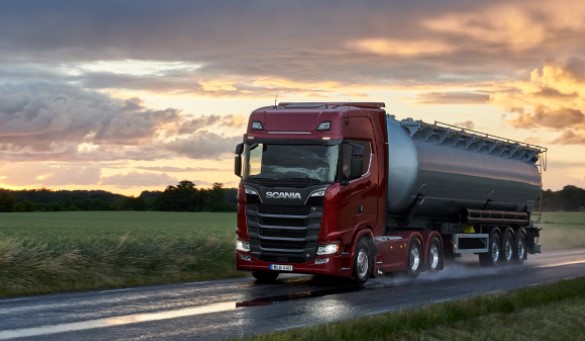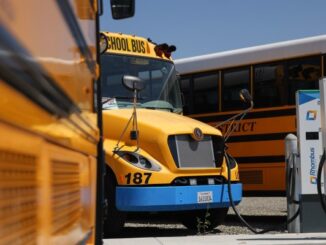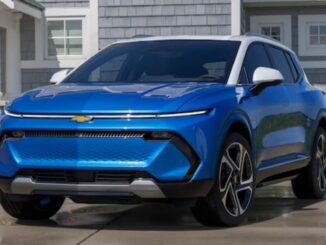
Any conversation about how to deal with the emissions problem from fossil fuel-powered vehicles will sooner or later end up turning to hydrogen. For a lot of people, it’s the obvious solution to the problem – it just needs a little more time to develop. But there is one very significant reason why hydrogen is not the solution the world needs to its ecological problems, at least not for any form of personal transportation. It can’t seem to escape how massively inefficient it is compared to battery-powered alternatives.
On the surface, hydrogen sounds like the wonder fuel to solve all our ecological problems. When employed in a fuel cell, its only byproduct is water, which is hardly going to destroy the atmosphere. But what really appeals to people is the fact you can refuel a hydrogen fuel cell vehicle in the same kind of way as a fossil fuel car. No lifestyle changes are necessary. Your car will have a completely different engine inside, but unless you enjoy tinkering with its mechanicals, you won’t notice from day today. You can just head to a fuel station when you need a five-minute top-up, just like the good old days.
Hydrogen’s Inherent Flaw
The problem is that this convenience hides a significant flaw in the technology that has somehow failed to be included in the marketing propaganda of hydrogen evangelists. It doesn’t appear to be widely understood by those who have been listening to these messages either. The flaw is basically caused by the laws of physics. For hydrogen to be completely green, it must be produced by electrolyzing water, which splits this into the H2 and O that it is made of. You can produce H2 from fossil fuels (usually methane), but this creates either “grey” hydrogen (which still produces lots of CO2) or “blue” hydrogen (which captures 90% of the CO2 and stores it, merely delaying the problem). Only electrolyzing hydrogen from water using electricity generated from renewable sources makes the fuel entirely green.
Hydrogen has already lost more than half of its energy before it even gets to the car.
This is an inefficient system that wastes energy. According to a frequently cited study by Transport & Environment, the process of electrolyzing hydrogen already loses 30% of the energy from the process of splitting the H2 from the O. You then have another 26% loss of the remaining energy from transporting the hydrogen to the fuel station, meaning you’ve already lost a total of 48% of the energy before any hydrogen makes it into a vehicle. You can save some of this by making hydrogen on site, but electrolysis plants cost millions, so they will more likely be centralized. In comparison, the typical loss from transferring electricity over wires to a charging station is just 5%, so you still have 95% left.
Things are already looking bad for hydrogen before you even put it in a car, but then you have the inefficiency of the powertrain in the vehicle. There are ways to burn hydrogen directly using synthetic fuel types or even via a paste, but these fuels lose even more energy in the process of production, and potentially have particulate emissions issues too. So, instead, for most personal hydrogen-based transportation applications, a clever technology called a fuel cell is utilized. This recombines the hydrogen and oxygen to produce water, which also generates electricity. It’s an incredible technical achievement, but unfortunately, you lose half the remaining energy in the process. This means you’re now down to 26% of the original electricity.
A hydrogen fuel cell drivetrain is inherently less efficient than a battery-electric one.
Toyota
In a battery-electric vehicle, the battery will typically only waste about 5% of the energy put into it during charging, although there will be another 5% loss from the AC/DC conversion. The supply will be AC, but the battery is DC, hence the need for conversion. Despite these losses, you still have about 85% of your original electricity going on to drive the car’s motors.
The DC/AC conversion and electric motors used by fuel-cell and battery electric vehicles create another 15% loss in both cases. The result is that for the BEV, you have been able to use around 73% of your original electricity for propulsion, but just 23% for with the FCEV. In other words, you will need around three times as much electricity to propel your FCEV the same distance as your BEV. There are some variations in the exact figure, with some putting the difference at twice rather than three times. But either way, you’re wasting a huge amount of energy with hydrogen. That, surely, means hydrogen is a non-starter in an energy-scarce world.
Hydrogen fuel cell vehicles are much less efficient than battery-electric – and using synthetic … [+] hydrogen-based combustion fuels even worse.
Transport & Environment
Hydrogen lovers will usually be the same people that tell you the biggest problem with battery-electric vehicles is that “the grid won’t be able to take it”. But if the grid can’t take charging a country’s fleet of cars when all are now BEVs, how on earth will it cope with having to supply two or three times as much for FCEVs? One argument is that hydrogen could be used to store surplus energy production, which one report in 2015 argued was as much as 54% of the grid supply in the UK. But so can batteries, and as we’ve already argued, more efficiently and with less wastage too.
Hydrogen Losing Ground
This message does seem to be getting through in some areas. Even though Toyota has a new Mirai due this year, its sales prospects don’t look that rosy. The most vibrant market for FCEVs is California, and sales volumes have been shrinking there. These were down 12% in 2019 and 55% in 2020. Unsurprisingly, with a new model looming in 2021, the old Toyota Mirai saw the biggest dip. But all FCEVs dropped in sales considerably, in an otherwise bumper year for EVs in general.
Even applications where hydrogen has typically been considered to have a major advantage are suffering. One of those usually suggested is trucks, where range and weight capacity are paramount. But here cracks also seem to be forming in the resolve of former backers. Volkswagen’s Scania truck brand has discontinued H2 development, arguing that hydrogen is too inefficient and expensive. Previously, Scania had been one of the leading vendors of hydrogen-powered trucks. But the tripling of energy needed to propel a vehicle the same distance with hydrogen compared to batteries was the nail in the coffin for the Swedish company.
Tesla Chairman and CEO Elon Musk steps out of the new “Semi” electric Truck during the unveiling for … [+] buyers and journalists on November 16, 2017 in Hawthorne, California, near Los Angeles. / AFP PHOTO / Veronique
After all, Tesla TSLA TSLA could be about to prove that you don’t need hydrogen for a long-range truck, anyway. In November last year, Elon Musk claimed that the Semi, a prototype of which has recently been spotted on Nevada roads, was going to have 621 miles of range. The downside would be the weight of the batteries, which would allegedly reduce the 40-ton capacity of the rig by a ton. The fast refueling of hydrogen won’t be much of a benefit when a Tesla Megacharger can add 400 miles in 30 minutes, however. It’s a requirement in the US for a truck driver to take a 30-minute break every eight hours anyway, according to the Federal Motor Carrier Safety Administration. With the typical 55mph speed limit in America, that’s less than 400 miles of driving, so a 30-minute charge will be fine.
This doesn’t completely discount hydrogen for some applications. Planes might still need to use the technology, due the weight advantage. If you have abundant renewable energy plus a ready supply of water – say a wind farm in the middle of the ocean – hydrogen could make sense for refueling electric ships at sea. But the massive inefficiency of FCEVs surely discounts them for most personal transport applications. So why are we still talking about this technology for mainstream transportation at all?



